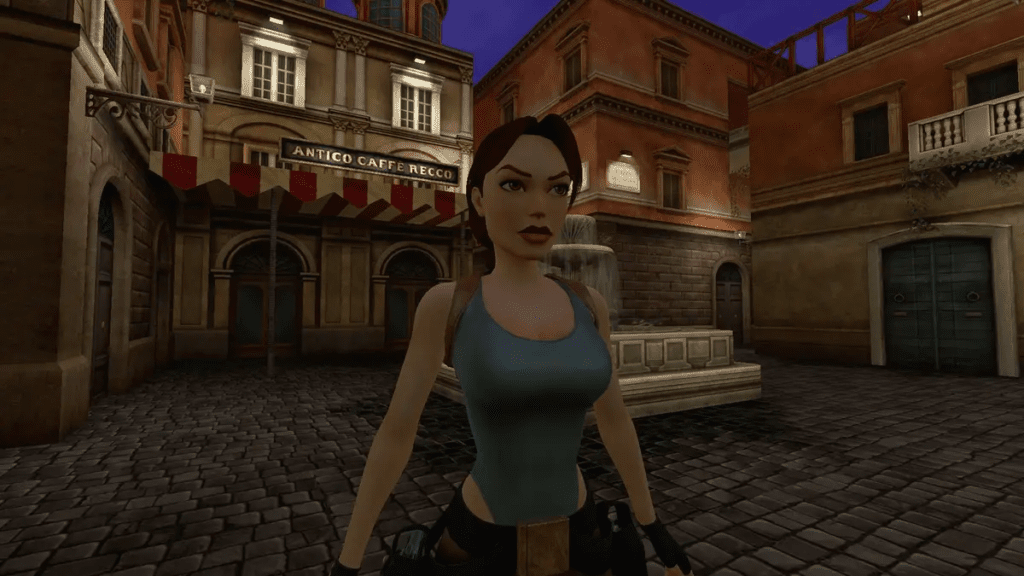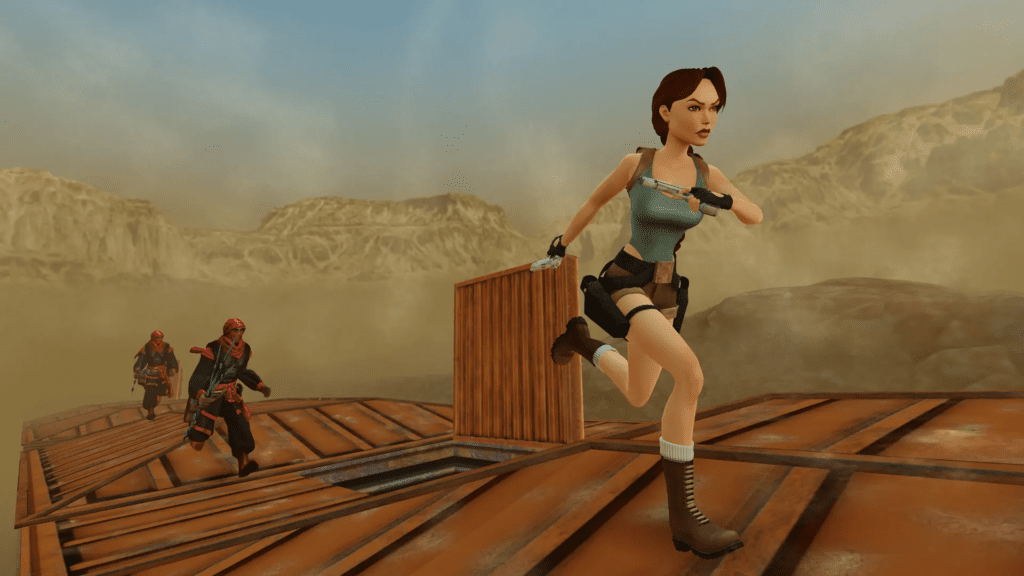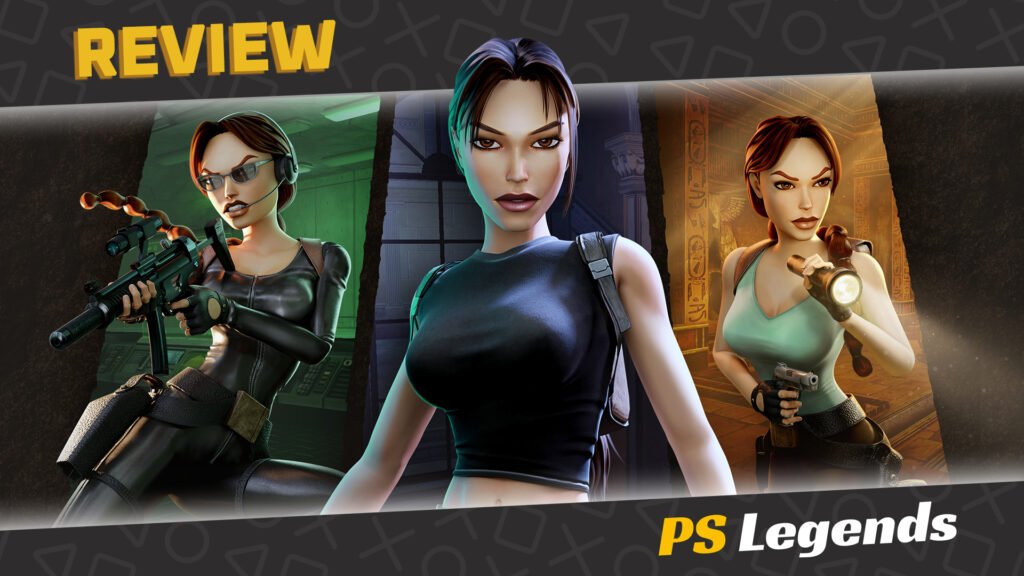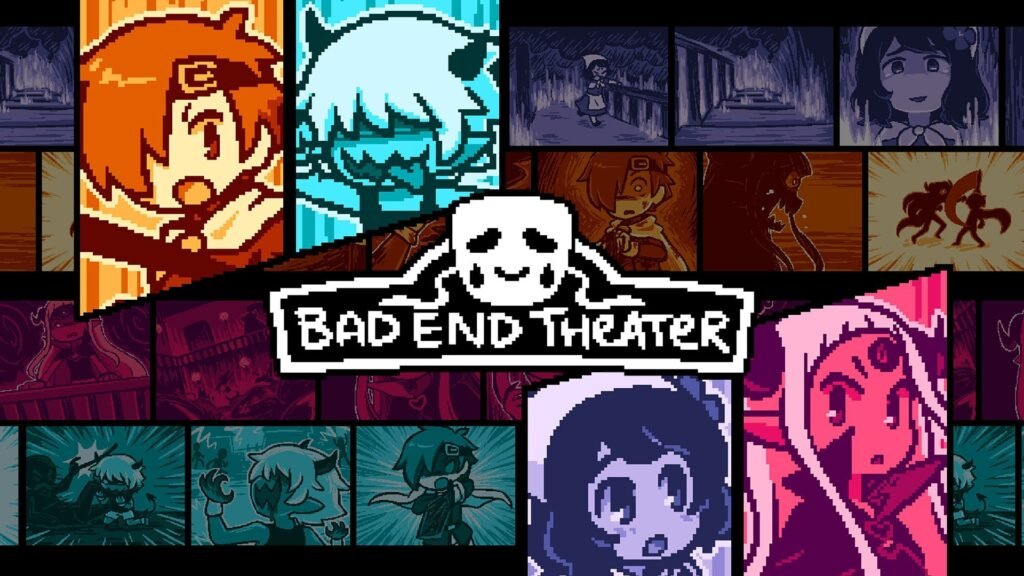One of the few highlights of the late ’90s was that we got a follow-up to our favourite games every year or two. While I personally chose to sidestep Sony’s expensive new PlayStation at the time, hoping Sega would bounce back to being a market leader, this had the disadvantage of limiting which games in the Tomb Raider series I got to play, not that I was disappointed with the few games I did get to experience (except for Angel of Darkness, of course).
Moving on from the masterpiece that was the original Tomb Raider, my next outing would see me return to Egypt for the Dreamcast’s extra-polished Tomb Raider: The Last Revelation. This would serve as the beginning of a new trilogy of mainline entry Tomb Raider games with a darker tone, a deeper narrative, and recurring characters.
This would be the second trilogy of games featuring the first generation of Lara Croft before the series was rebooted and the backstory revised. This wasn’t quite what the original team at Core envisioned for the future of their beloved Lara, with a whole new Gen 1 trilogy originally planned, but all things must come to an end.
Perhaps a reboot was inevitable, considering how experimental the second trilogy was, with more focus placed on narrative and character interactions which would be a step forward explored further in later games, while new mechanics and revised controls would need far more refinement, resulting in the second trilogy starting on an excellent high, but ending with a disappointing low.

On This Page
Introduction
Tomb Raider IV–VI Remastered is a 2025 collection of action-adventure games developed and published by Aspyr. It is a fully remastered compilation of the final three games in the first generation Tomb Raider series, originally developed by Core Design: The Last Revelation (1999), Chronicles (2000), and The Angel of Darkness (2003).
Tomb Raider IV–VI Remastered began production after the release of Tomb Raider I–III Remastered in 2024. Following player feedback, Aspyr would take previous criticism into account. The team wanted to preserve and enhance the darker atmosphere of the three games through the remastering process. For Angel of Darkness, several pieces of cut content have been restored, including voice lines and gameplay elements.
Tomb Raider IV–VI Remastered was released as a cross-buy title for PlayStation 4 and PlayStation 5 on 14th February 2025. As well as including some cut content, all three games feature the option of modernised controls and a significant visual upgrade which can be toggled on and off at any time.

Story
Tomb Raider: The Last Revelation
The Last Revelation opens with a flashback to a teenage Lara Croft in 1984, when she and her mentor Werner Von Croy are exploring a section of Angkor Wat for an artifact called the Iris. Upon discovering the Iris, Von Croy’s haste to retrieve it triggers a trap, trapping Von Croy and seemingly killing him, forcing Lara to escape without him.
In the game’s present of 1999, Lara is in Egypt exploring the Tomb of Set, where the titular god of chaos is said to be imprisoned. She finds the legendary Amulet of Horus within the tomb, and escapes with it after being betrayed by her guide, who is revealed to be working for a very much still alive Von Croy.
The writing on the Amulet reveals that Lara’s actions have released Set. Guided by her friend Jean-Yves, Lara explores ruins beneath Karnak and enters the tomb of Semerkhet, a human ally to Set’s nemesis, Horus. There, Lara seeks a way to stop Set by summoning Horus before Set can be fully unleashed upon the world.

Tomb Raider Chronicles
Following the events of The Last Revelation, Lara is lost under the Great Pyramid of Giza. Back at Lara’s home of Croft Manor, three old friends: Lara’s butler Winston, the family priest Father Patrick Dunstan, and Lara’s history teacher Charles Kane, reminisce over some of Lara’s earlier adventures.
The first story follows Lara’s quest through the catacombs of Rome in search of the Philosopher’s stone. She is pursued by Larson Conway and Pierre DuPont, adversaries she would encounter during the events of Tomb Raider. The second story, recounted by Kane, sees Lara hunting the Spear of Destiny, lost on the ocean floor since World War II.
The third story, told by Dunstan, follows a teenage Lara when she secretly follows Dunstan to an island haunted by demonic forces. The fourth story, related by Winston, shows Lara infiltrating the New York corporate headquarters of her former mentor Werner Von Croy to retrieve the Iris, the pursuit of which caused the conflict between them.

Tomb Raider: The Angel Of Darkness
The Angel of Darkness follows on from events in Tomb Raider: The Last Revelation and Tomb Raider: Chronicles. Lara arrives in Paris at the request of her former mentor, Werner Von Croy, who was tasked by a man named Eckhardt to find a set of artifacts known as the Obscura Paintings.
The city, and Von Croy, are gripped with fear over a serial killer the press has dubbed the “Monstrum”. During an argument between Lara and Von Croy, an unknown force attacks them, and Lara is knocked unconscious. She wakes to find Von Croy dead and her memories of the attack blurred. Suspected of his murder, Lara goes on the run, desperately trying to uncover the truth.

Gameplay
Tomb Raider IV–VI Remastered is a collection of remasters of three games in the Tomb Raider series, Tomb Raider: The Last Revelation, Tomb Raider: Chronicles, and Tomb Raider: The Angel of Darkness, all individual games with some small differences in mechanics from game to game, though each is presented from a third-person perspective.
In classic style, Lara is controlled through levels using tank controls. In addition, Lara can sprint, walk, move certain objects, take manual control of the game camera to look around the area, climb, monkey swing using suitable overhead surfaces, crawl through narrow spaces, roll, and jump across gaps. There are also more secretive actions such as turning mid-jump, performing swan dives into water, and performing a handstand.
In deeper bodies of water, Lara can swim around, with a limited amount of breath before she must surface or risk taking damage from oxygen deprivation, however in shallower water, Lara can wade at a walking pace and jump vertically. In addition to her standard and returning moves, Lara can climb up poles and ropes, swing on ropes to cross gaps or reach new heights. Some environmental elements such as torches and switches can also be interacted with.
Combat encounters involve Lara engaging enemies which appear at certain points of progression. Lara’s main weapons are her recurring dual pistols with unlimited ammunition. Lara may also find and utilise a shotgun, uzis, revolvers, grenade launchers, and a crossbow which can also be found throughout the games, all of which have limited ammunition, and some have multiple types for different effects on enemies.
A laser scope can also be found, which when attached to a compatible weapon allows for accurate aiming from a first-person perspective. Some key items in multiple levels are binoculars for seeing distant areas, a crowbar for prying items from set places or opening certain doors, and flares for illuminating dark areas. Consumable items such as health packs and ammunition can be found throughout each level, including unexplained secret caches of supplies.

Graphics/Sound
Although you can still toggle back to classic visuals if you wish, the graphical revamp here is very welcoming. The original games didn’t have much in the way of fancy lighting effects, and so the improved lighting here is a lot more realistic, though it makes some sections a lot darker than they were before, and will take some getting used to. The frame-rate has been vastly improved, with the three games running at a steady 60FPS throughout.
This is not a modern HD re-creation, but rather a highly-textured re-skin of the original games which takes the time to fill in missing details from the originals, not so much in the more visually modern Angel of Darkness, but most noticeably in The Last Revelation. Empty skylines are filled with clouds and stars, while black window apertures now have frames and relevant interiors and lighting.
We have a brand new camera system which allows you to freely look around to enjoy these newly vibrant environments, and feels a bit more responsive than it did in Tomb Raider I-III Remastered. Sadly, the visual upgrade does little to fix most of the hefty graphical glitches from the original games. Lara can and will frequently clip through walls, scale surfaces by missing obvious hand-grip locations, and stumble around and through switches.
The sound design has been kept intact for the most part. The voice acting is a mixed bag, with Lara sounding lovely as always despite a voice actress change since the last games, while characters like Von Croy and Larson bringing ethnically exaggerated performances that neither captivate nor impress. The soundtrack still does a decent enough job as well, though don’t expect much in the way of noticeable enhancements.

Conclusion
Tomb Raider Remastered does exactly what it says on the tin, taking the second trilogy of games and re-skinning everything with lovely new HD textures and a more modern control scheme. Hardcore classic Tomb Raider fans will inevitably be delighted with it, yet this isn’t a package that’s been perfectly refined for a modern audience; only a proper remake could really do that, and so anyone but the most loyal Tomb Raider fanatics will likely see the cracks starting to show.
It’s an unfortunate fact that not all games age well, and the classic Tomb Raider series falls into this category, being products of their time, and as we saw with the original release of Angel of Darkness, a maturing audience brings higher standards. There are a lot of annoyances still present here from the base games; issues that were forgivable in the late ’90s when there weren’t better games around to act as shining examples, yet today we’re struck with a lot of big no-nos.
Neither control scheme seems perfectly suited for the job, with the classic ‘tank’ controls designed for more accurate platforming, yet feeling sluggish, unrealistic, and restricted, while the modernised controls lack precision and familiar mapping. Perhaps my biggest grievance with the whole package is the lack of an auto-save facility.
Save points have been removed from the games entirely, allowing for manual saves to be made at any time from the menu, yet being accustomed to modern action-adventure games (including the newer Tomb Raider games) pushes us to comfortably rely on auto-saves, only making manual saves at the end of a session. This caught me off-guard in every game, even costing me over an hour’s progress from one of many untimely cheap deaths.
The Tomb Raider Remastered trilogies will challenge you, targeting not only your skill, but also your patience and your endurance. This is a heck of a lot to ask of an aging gamer, who simply wants to revisit some of the best bits of their youth without the added frustration. You’ll get a brief nostalgia fix here, aided immensely by the impressive visual makeover, but sadly not much else.
Joys
- A decent visual upgrade, especially in the environments
- Outstanding value for money
- Bonus content and extras
Cons
- Controls still aren’t great
- No auto-save option
- Some graphical hiccups remain



